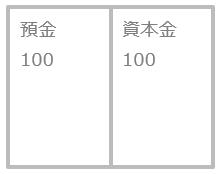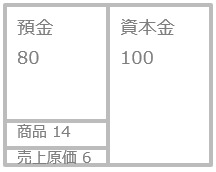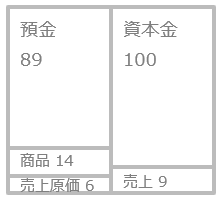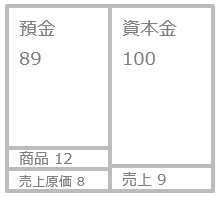The three financial tables are the standard format for representing a company's goods, amount and cash
Whether it is a company or a private business, the movement of goods, amount and cash is the essence of business in all economic activities, and even if automation of business is advanced by the introduction of a system, it is knowledge that must be systematically understood in order to generate new ideas based on actual events, and this is of a completely different nature than information that can be simply Googled on the Internet.
The global standard formats for showing the movement of goods, money and cash are P/L (Profit and Loss Statement = often called Income Summary in Indonesia), Balance Sheet B/S (Balance Sheet), Cash Flow Since it is a financial triad called a statement C/F (Cash Flow Statement), it is necessary to understand the general flow of the process by which these statements are prepared.
There are several important points in the process of creating this financial triad.
- Capital is money invested by shareholders, and as it is invested, it is transformed into goods and equipment.
- Purchased goods become cost of sales when they are sold.
- Profits are carried forward as retained earnings and become a source of incremental company assets.
- There is a discrepancy between accrual-based profits and income and expenditure differences.
- P/L to look at revenue and expense flows, B/S to look at stock, and C/F to look at income and expense flows.
When I was a student, we were told that even humanities majors should study English and accounting before graduation, and in recent years, we are told to do programming in addition to these.
Translating transactions into sliding puzzle moves
To simply understand the big picture flow of how the three financial tables are generated, it's easy to translate the example of opening a smart shop, where you stock 10 products and 4 of them are sold, into the movement of the pieces of a sliding puzzle where the left and right sides are always balanced.
1. On opening the business, he transferred 100 juta from his personal account to the company's account.
 When you transfer 100 juta from your own savings account to your shop account, you generate the piece of 100 juta shop deposits, and balance the left and right sides by lining up the piece of (legal) capital, which is the source of the 100 juta, to the right.
When you transfer 100 juta from your own savings account to your shop account, you generate the piece of 100 juta shop deposits, and balance the left and right sides by lining up the piece of (legal) capital, which is the source of the 100 juta, to the right.
If, at a later date, the shop's deposit balance is insufficient to transfer additional funds from your own savings account to the shop's account, the source of the funds is the piece of debt, not the capital.
The capital is the total amount of shares held by the shareholders listed on the certificate of incorporation, and if you accept investment from a VC (venture capitalist) who is attracted to the shop's potential (so-called financing), you increase the amount of the capital piece in the form of a private placement.
2. I stocked up on 10 of the product's phones at 2juta.
 With the deposit piece reduced by 20juta to the piece of merchandise, the left and right sides are balanced with the breakdown of the capital being distributed between deposits and merchandise.
With the deposit piece reduced by 20juta to the piece of merchandise, the left and right sides are balanced with the breakdown of the capital being distributed between deposits and merchandise.
This is the method of recording the purchased goods in the cost of sales only when they are sold (continuous recording method), but another method is to record all the goods in the cost of sales at the time of purchase and calculate the cost of sales by subtracting the month-end inventory from the sum of the beginning of the month and the cost of purchases (trifecta method).
3. The 9juta for the sale of the three phones was paid for with a debit card.
 Since we sold three smartphones with a cost of 2juta, the piece called product is reduced by 6juta and changed to the piece called cost of sales, and the left and right sides are balanced.
Since we sold three smartphones with a cost of 2juta, the piece called product is reduced by 6juta and changed to the piece called cost of sales, and the left and right sides are balanced.
The cost that is expensed at the time of sale is called cost of sales, whereas the costs that are always incurred at the end of the month, such as store salaries, are called periodic costs.
 At the same time as the cost of sales accrual, the left and right sides are balanced by the fact that the piece of deposits increases by 9juta as the payment for three sales is received at 3juta per piece, and the piece of sales, which is the source of the payment, accrues 9juta.
At the same time as the cost of sales accrual, the left and right sides are balanced by the fact that the piece of deposits increases by 9juta as the payment for three sales is received at 3juta per piece, and the piece of sales, which is the source of the payment, accrues 9juta.
By reflecting the transactions that occur in this way to some piece on the left and right and always balancing them, we can explain the accounting system without being aware of the complicated accounting journal rules.
4. I sold one phone and paid 3juta for it the following month.
 Since we sold one phone with a cost of 2juta, the piece of product decreased by 2juta and changed to the piece of cost of sales, and the left and right sides are balanced.
Since we sold one phone with a cost of 2juta, the piece of product decreased by 2juta and changed to the piece of cost of sales, and the left and right sides are balanced. At the same time as cost of sales is incurred, the 3juta for the sale of one unit at 3juta does not increase the deposit but generates a piece called accounts receivable, which balances the left and right sides by increasing the sales piece, the source, by 3juta.
At the same time as cost of sales is incurred, the 3juta for the sale of one unit at 3juta does not increase the deposit but generates a piece called accounts receivable, which balances the left and right sides by increasing the sales piece, the source, by 3juta.
This accounts receivable piece will disappear when the payment is made next month, and the left and right sides will be balanced by increasing the deposit piece by 3juta.
5. Determine the current month's profit.
 By separating out only sales and cost of sales and fitting the piece called profit to the difference 4juta in the hollowed-out area on the left, the profit for the month was determined to be 4juta.
By separating out only sales and cost of sales and fitting the piece called profit to the difference 4juta in the hollowed-out area on the left, the profit for the month was determined to be 4juta.
The profit is established from the flow of expenses and revenue incurred in the current month, which is the income statement (P/L).
For the rest of the piece, the company's asset status and its breakdown at the end of the month was determined by fitting the piece called surplus to the difference 4juta in the hollowed out area on the right.
It is the balance sheet (B/S) that establishes this shop's asset situation, the stock.
Capital is the capital invested by the shareholders, while retained earnings is the capital stored in the shop as a result of the profits made from operating activities.
6. Classification of deposit movements
If you go from nothing at the beginning of the month to a balance of 89juta at the end of the month, it means that deposits have flowed in 89juta compared to the beginning of the month, and you can understand it by comparing the B/S which shows the stock situation at the end of the month.
If you want to know the details, you need to follow the history of transactions as follows.
- There was an inflow of 100juta that I transferred from my own personal account when I opened the business, 20juta outflow for 10 smartphone purchases, and 92juta inflow for a total of 4 smartphone sales and 12juta inflow for a total of 4 smartphone sales...wait, one of them was sold on account, so the inflow is 9juta, so the correct inflow is 89juta.
The inflow of 100juta at the time of opening is based on "financial activities" in the form of capital, which is on the right side of the B/S, the outflow of 20juta from the purchase of smartphones is based on "investment activities" in the form of product purchases, which is on the left side of the B/S, and the inflow of 9juta from sales can be divided into inflows based on "sales activities", which are reflected on the P/L.

The statement of cash flow (C/F) looks at this movement of cash in the form of deposits, which is backed up by the stock of B/S deposits, and is important for understanding the flow of funds in a company's activities, where the game is over when there is a shortage of funds to pay the bills.



